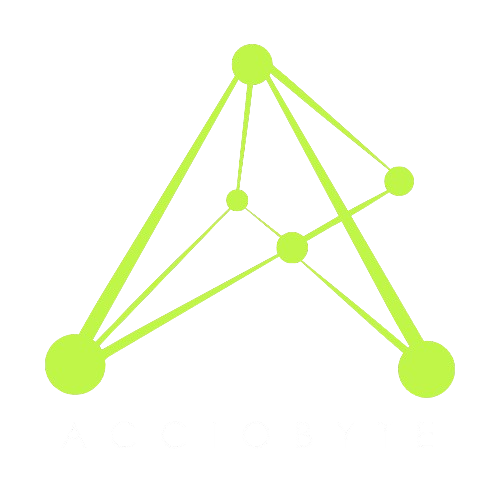















The Impact of 5G on Software Development & IoT
Introduction: The 5G Revolution and Its Implications
The rollout of 5G technology is ushering in a new era of connectivity that is set to transform industries worldwide. As the fifth generation of mobile networks, 5G offers unprecedented speed, lower latency, and enhanced capacity compared to its predecessors. While its impact is already visible across various sectors, two of the most affected areas are software development and the Internet of Things (IoT). With the promise of ultra-fast data transmission and real-time communication, 5G is opening doors to innovations that were once considered impossible. From smart cities and autonomous vehicles to next-gen applications and industrial automation, 5G is revolutionizing the way developers create software and how IoT devices interact with one another.
How 5G is Transforming Software Development
The advent of 5G is changing the landscape of software development, introducing new possibilities for applications that demand real-time responsiveness, seamless connectivity, and enhanced security. Developers now have the capability to create sophisticated applications that leverage 5G`s benefits to deliver richer user experiences and more efficient functionalities. With speeds up to 100 times faster than 4G, developers are no longer constrained by network limitations, allowing them to design software with more data-intensive features, immersive multimedia, and cloud-driven functionalities.
The reduction in latency, which 5G achieves by minimizing delays in data transmission, means that applications requiring real-time interaction, such as gaming, virtual reality (VR), and augmented reality (AR), can now operate without noticeable lag. This is a game-changer for industries that rely on immediate feedback and seamless communication between devices and users. Furthermore, the ability to handle a massive number of simultaneous connections allows developers to build applications that support more users and IoT devices without performance degradation. As a result, businesses can scale their applications more efficiently, leading to increased innovation in areas such as smart healthcare, remote collaboration, and edge computing.
The Role of 5G in Cloud-Native and Edge Computing Applications
As software development shifts toward cloud-native approaches, 5G plays a pivotal role in enhancing cloud applications and enabling edge computing solutions. Cloud computing has long been the backbone of modern applications, but 5G takes it a step further by ensuring near-instantaneous access to cloud resources. This means that applications hosted on cloud platforms can deliver real-time analytics, seamless streaming, and AI-driven functionalities without delays.
In addition to cloud computing, 5G is a key enabler of edge computing, where data processing occurs closer to the source rather than being sent to distant cloud servers. This drastically reduces latency and improves efficiency for applications that require immediate data processing, such as autonomous vehicles, industrial automation, and IoT-driven healthcare monitoring systems. With 5G-powered edge computing, developers can create applications that provide real-time insights and decisions without relying on centralized data centers, ensuring faster response times and enhanced security.
The Impact of 5G on IoT Connectivity and Scalability
The Internet of Things (IoT) is one of the biggest beneficiaries of 5G, as it enables a vast network of connected devices to communicate with each other efficiently and reliably. With 5G`s ability to support up to a million devices per square kilometer, the scalability of IoT applications is significantly enhanced. This means that industries such as smart manufacturing, agriculture, and transportation can deploy extensive networks of IoT sensors and devices without worrying about connectivity limitations or network congestion.
Smart cities, for instance, rely on thousands of interconnected devices to monitor traffic flow, energy consumption, air quality, and public safety. With 5G, these sensors can transmit real-time data with minimal latency, allowing city planners to make informed decisions and optimize urban infrastructure. In the agricultural sector, 5G-powered IoT devices can collect and analyze data from smart irrigation systems, soil sensors, and weather monitoring stations to improve crop yields and resource management. Similarly, in the healthcare industry, wearable devices and remote monitoring systems can provide doctors with real-time patient data, enabling proactive treatment and reducing hospital visits.
Enhancing Security and Reliability in IoT with 5G
One of the biggest challenges facing IoT adoption has been security, as traditional networks often struggle to handle the vast amount of data generated by connected devices. With the introduction of 5G, security and reliability are significantly improved due to built-in encryption protocols, network slicing capabilities, and enhanced authentication mechanisms. Network slicing allows for the creation of separate, isolated virtual networks within the 5G infrastructure, ensuring that critical IoT applications operate on secure and dedicated bandwidths. This is particularly beneficial for industries such as finance, healthcare, and emergency response, where data privacy and reliability are paramount.
Additionally, 5G introduces robust security features that protect against cyber threats, including improved identity management, advanced encryption, and AI-driven anomaly detection. By integrating these security measures, developers can build IoT applications that are more resilient to hacking attempts, ensuring that sensitive data remains protected and that devices operate without disruption. As 5G adoption continues to grow, businesses must prioritize security-first software development strategies to fully leverage the potential of IoT in a safe and secure manner.
5G`s Role in Autonomous Vehicles and Smart Transportation
The transportation industry is undergoing a major transformation with the integration of 5G technology, particularly in the development of autonomous vehicles and smart transportation systems. Autonomous cars rely on vast amounts of real-time data from sensors, cameras, and GPS systems to navigate safely. 5G enables these vehicles to process and transmit data at lightning speeds, allowing for split-second decision-making and enhanced road safety.
Beyond self-driving cars, 5G is revolutionizing public transportation and logistics by enabling real-time traffic management, predictive maintenance, and vehicle-to-vehicle (V2V) communication. Traffic signals, road sensors, and smart infrastructure can transmit real-time data to optimize traffic flow, reduce congestion, and minimize accidents. Logistics companies can also benefit from 5G-powered tracking and monitoring solutions that provide real-time visibility into supply chain operations, ensuring timely deliveries and reducing operational costs.
The Future of 5G in Smart Homes and Consumer IoT
The impact of 5G extends beyond industries and into the daily lives of consumers through smart home technology. With the increasing adoption of smart home devices such as connected thermostats, security cameras, and voice assistants, 5G ensures seamless connectivity and real-time automation. Homeowners can control appliances remotely, receive instant security alerts, and optimize energy consumption with greater efficiency.
Additionally, entertainment experiences are set to be transformed with 5G-powered streaming services, cloud gaming, and virtual reality applications. With ultra-low latency and high-speed connectivity, users can enjoy immersive gaming experiences, uninterrupted 4K and 8K video streaming, and interactive AR/VR content. As 5G networks continue to expand, consumer IoT adoption will surge, leading to smarter, more connected homes and personalized digital experiences.
Conclusion: Preparing for a 5G-Powered Future
The impact of 5G on software development and IoT is undeniable, paving the way for a more connected, efficient, and intelligent world. Developers now have the opportunity to build applications with real-time capabilities, enhanced security, and limitless scalability, while businesses across industries can leverage IoT solutions to optimize operations and improve decision-making. As 5G networks continue to expand globally, companies must embrace this technology to stay competitive and future-proof their digital transformation strategies. The future of connectivity is here, and 5G is leading the charge toward a smarter and more efficient world.
